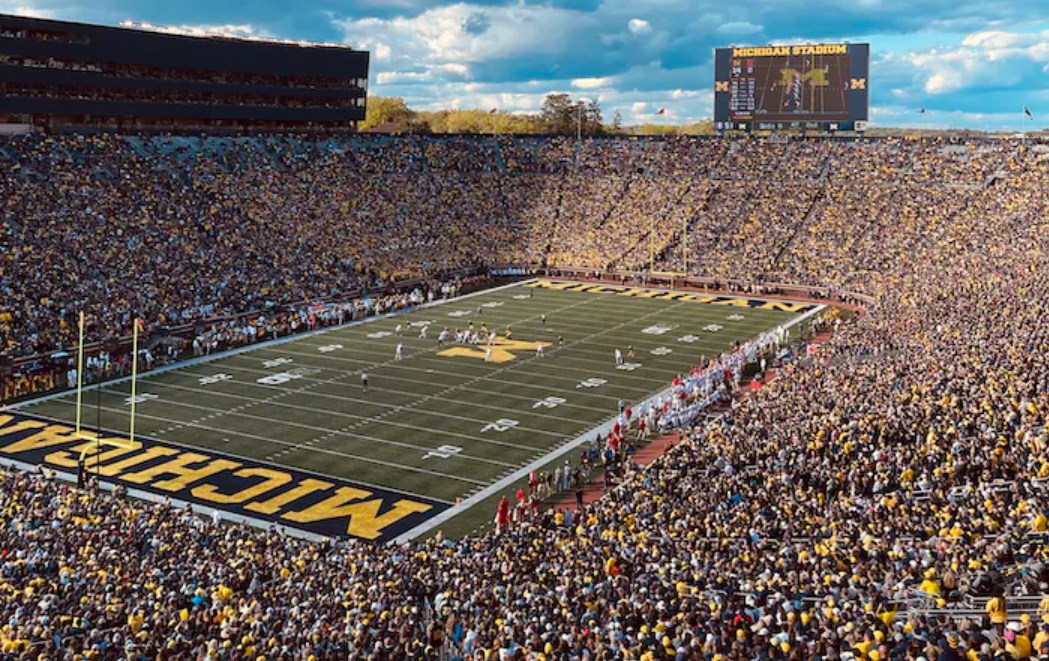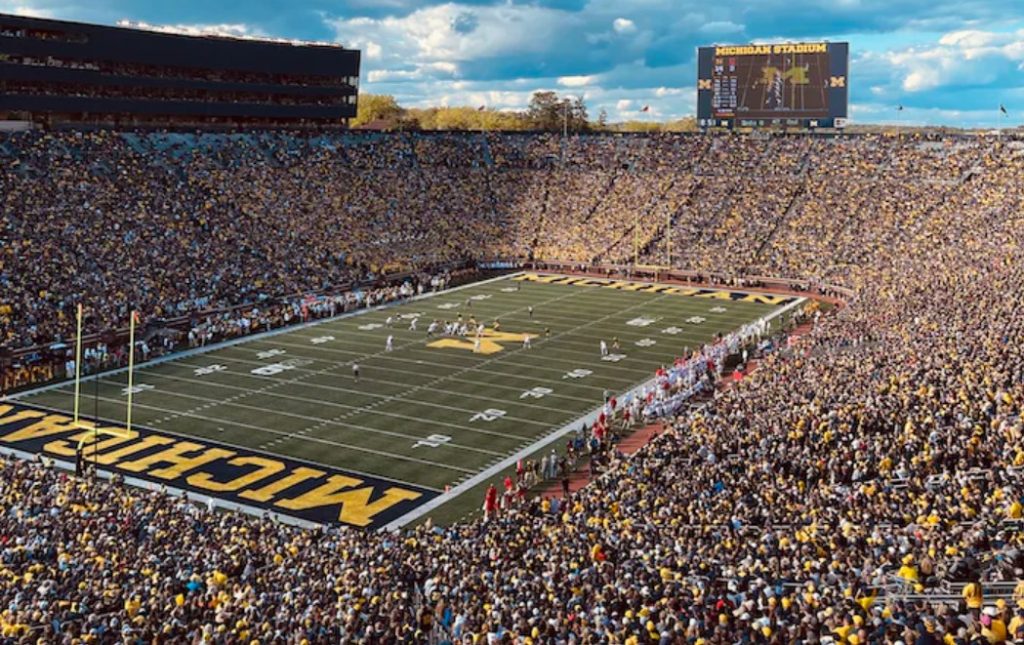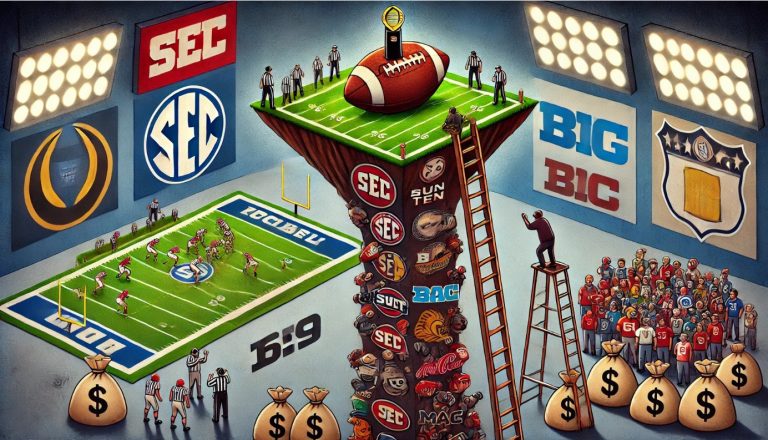

By Larry Billinger
When it comes to the world of American football, two major leagues stand out: the National Football League (NFL) and college football. The NFL boasts star-studded teams, household names, and a massive fan following. However, if we shift our focus from star players to stadium size and ticket prices, we find that college football often takes the lead.
Size Matters: College Football’s Grand Stadiums
If you think the NFL has the biggest stadiums, think again. College football takes the crown in this regard. The enormous stadiums that dot the college football landscape are nothing short of architectural marvels. Consider the colossal Michigan Stadium, also known as “The Big House,” which can hold over 107,000 fans. Beaver Stadium at Penn State and Texas A&M’s Kyle Field are not far behind, with capacities exceeding 100,000. These stadiums create an electric atmosphere that’s hard to match.
In fact, the top 32 college football stadiums alone can hold over 2.2 million spectators. That’s a mind-boggling number, and it showcases the sheer scale and passion that college football fans bring to the game.
The NFL: Bigger Isn’t Always Better
On the other hand, when it comes to sheer size and historical significance, college football venues often rival their NFL counterparts. Stadiums like AT&T Stadium, home to the Dallas Cowboys, and Lambeau Field, where the Green Bay Packers play, certainly have their iconic status in the NFL. However, they typically have lower seating capacities compared to some of the historic giants in college football.
Ticket Prices: NFL vs. College Football
Now, let’s talk about ticket prices. While the NFL may have smaller stadiums on average, it often charges more per seat. Why? Several factors come into play.
Supply and Demand: NFL games are incredibly popular, and demand for tickets is consistently high. This high demand allows NFL teams to price their tickets at a premium.
Fewer Games: The NFL regular season consists of 17 games per team, making each game a special event. In contrast, college football teams typically have around 12 regular-season games. Additionally, the NFL’s fewer teams generate tremendous demand for tickets, contributing to the premium pricing for their games.
Premium Seating: NFL stadiums often feature premium seating options, such as luxury suites and club seats, which command significantly higher prices.
Market Differences: The cost of living and income levels in NFL cities can be higher than in college towns, which can influence ticket pricing.
Game Experience: NFL games offer a unique game-day experience, with tailgating and entertainment options, which can justify higher ticket costs.
In contrast, college football tickets, while still popular, tend to be more affordable on average. Many universities offer season ticket packages at reasonable rates, making it accessible for both students and alumni to attend games regularly.
Conclusion
In the realm of American football, size and ticket prices can tell a fascinating story. College football stadiums are undeniably larger and create an electric atmosphere. The college football landscape also boasts a rich history with iconic venues like the Rose Bowl, which opened its doors in 1922, standing as living monuments to the sport’s traditions.
The NFL, while often featuring smaller stadiums, charges a premium for its games due to high demand, a unique game-day experience, and the exclusivity of a 17-game season. Whether you prefer the NFL or college football, both offer exciting opportunities to witness the sport at its finest. The choice between cheering for your favorite NFL team in a smaller, exclusive setting or being part of a colossal college football spectacle depends on your priorities and budget. Either way, American football continues to capture the hearts of fans across the nation, no matter the size of the stadium or the cost of a ticket.


